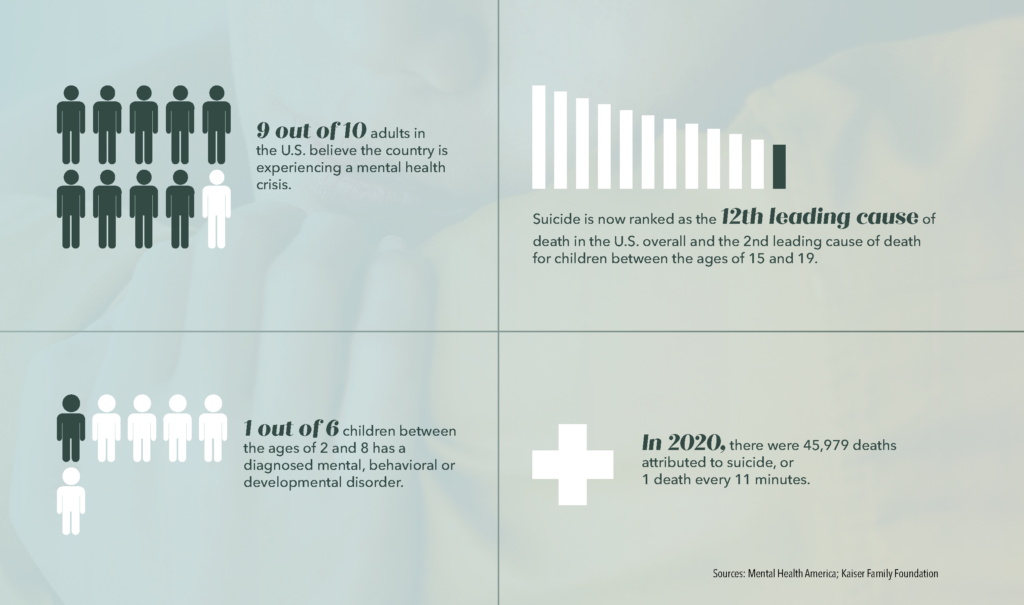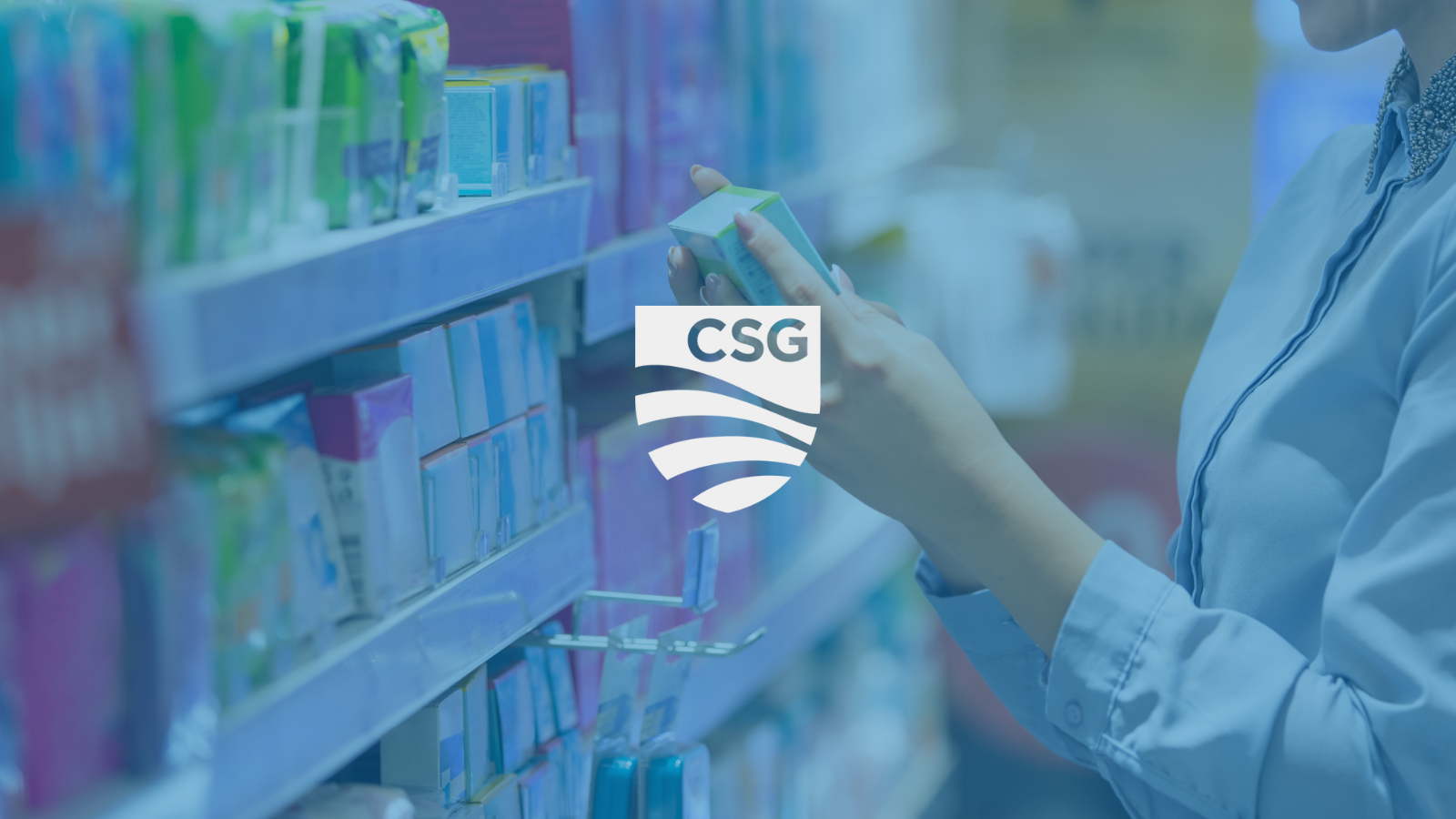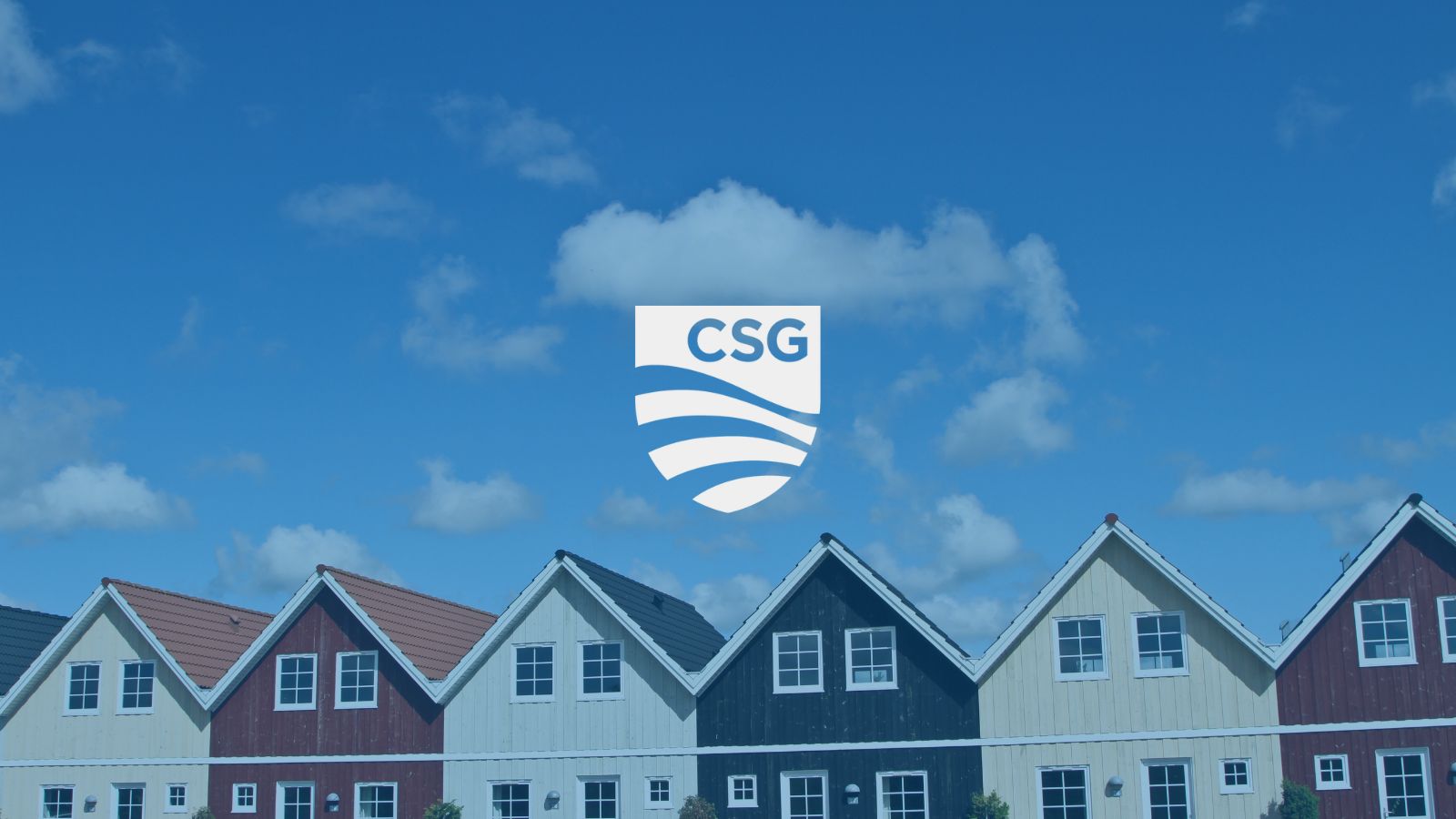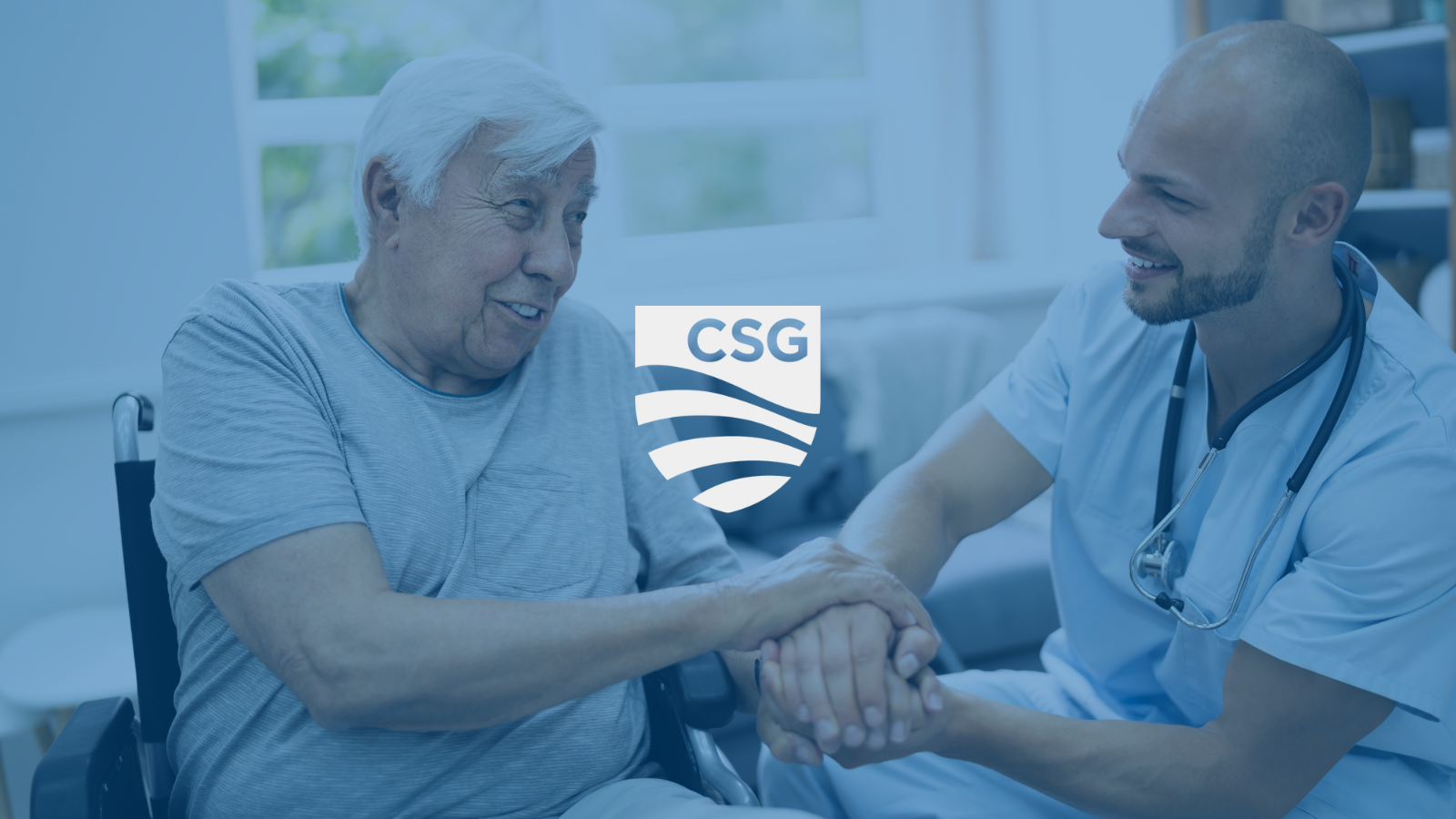State leaders from Hawaii hosted CSG and policymakers from California, Minnesota and Washington in late February to discuss successful policy strategies used to create a responsive and sustainable long-term care system. The day-long summit gathering more than 50 state policymakers and stakeholders included numerous policy examples by CSG from each of the seven state strategies to revitalize the long-term care workforce.
Continue readingMental Health Among Top Policy Priorities for the States
By Jennifer Horton and Sean Slone
The Council of State Governments works to help state officials solve problems and share information with other policymakers across the U.S. As a nonpartisan association of all state officials, elected and appointed, the work of CSG is research informed in order to help states identify solutions that help their communities. We recognize that no single solution works for everyone, but we can learn from the successes — and failures — of other states.
Through extensive survey work conducted by the CSG Center of Innovation research team, the CSG national office identified five top priority public policy issues that — in addition to work in other areas — CSG policy staff will expand on and provide resources for during 2023:
- INFRASTRUCTURE AND TRANSPORTATION.
- FISCAL AND ECONOMIC POLICY.
- HOUSING.
- MENTAL HEALTH INCLUDING SUBSTANCE USE DISORDER.
- EDUCATION AND WORKFORCE.
Each issue of CSG Capitol Ideas magazine in 2023 will focus on the work states are doing in each of these policy areas. This issue kicks off with a deeper dive into mental health and the different ways states are working to address this growing issue.

STATE ACTIONS TO ADDRESS MENTAL HEALTH
Nine out of 10 adults in the U.S. believe the country is experiencing a mental health crisis. With that consideration, which resulted from a poll conducted by CNN and the Kaiser Family Foundation, and the topic of mental health gaining more attention in the conversations surrounding health care and wellness, many states are directing efforts at some of the most pressing concerns.
Recently, these have included suicide prevention (a leading cause of death in the U.S.), children’s mental health (1 in 6 children between the ages of 2 and 8 has a diagnosed mental, behavioral or developmental disorder), and expanding access to care. Mental Health America’s 2022 report provided a state-by-state look at access to mental health services, ranking states overall and in a number of categories including adult mental health, youth mental health, prevalence of mental illness and access to care.
SUICIDE PREVENTION
In 2020, there were 45,979 deaths attributed to suicide, or one death every 11 minutes. Even more people thought about or attempted suicide with more than 16 million adults seriously thinking about, planning or attempting suicide.
Suicide is now ranked as the 12th leading cause of death in the U.S. overall and is the second leading cause of death for children between the ages of 15 and 19 years old. As cases of mental health conditions rise and the search for solutions continues, specialists around the nation are calling it a national mental health crisis.
A number of states passed legislation to fund and implement the new National Suicide Prevention Lifeline, 988, in 2021. Experts hope that the inclusion of 988, dubbed by some as the mental health equivalent of 911, will successfully prevent more people from dying due to mental health concerns. Colorado (Senate Bill 21-154; 2021) and Washington (House Bill 1477; 2021) established telecommunications charges and appropriated funds to support the help line’s implementation and working groups to provide recommendations and/or oversee and administer the hotline.
Individuals who identify as LGBTQ+ experience disproportionate levels of poor mental health and suicidality. According to a survey conducted in 2021 by the Centers for Disease Control and Prevention looking at high school students, 25% of lesbian, gay or bisexual students attempted suicide during the past year compared to 5% of heterosexual students. States have passed legislation to support this population, both by protecting them from practices that have been linked to substantial harm as well as by enacting bills that increase access to LGBTQ+ affirmative care.
In 2021, North Dakota enacted new ethics standards in alignment with the American Psychiatric Association’s Guidelines for Psychological Practice with Sexual Minority Persons and the APA’s Position Statement on Conversion Therapy and LGBTQ Patients that prohibit licensed social workers from subjecting LGBTQ+ youth to conversion therapy and require practitioners to use therapies that affirm individuals’ sexual orientations and gender identities. During the 2021 and 2022 legislative sessions, Illinois (SB 4028) and Vermont (HB 210) enacted bills creating task forces that will provide recommendations for increasing access to LGBTQ+ supportive care.
CHILDHOOD MENTAL HEALTH
In recognition of the role of schools as a crucial access point to youth mental health care, states have enacted at least 100 laws since early 2020 aimed at supporting schools in the delivery of school-based mental health services. Some examples of this recent legislation include:
- Connecticut: HB 6621 (Public Act No. 21-95, enacted June 2021) established requirements for the School Emotional Learning and School Climate Advisory Collaborative, which will develop a strategy to initiate collaborations with community-based mental health providers and support school staff in mental health and social-emotional learning. Connecticut SB 2 (Public Act No. 21-46, also enacted in June 2021) requires local boards of education to allow students to take up to four mental health days per school year.
- Illinois: SB 818 (Public Act 102-0522, enacted August 2021) requires that health education courses for students include information on mental health.
- Massachusetts: H 4002 (Chapter 24, enacted July 2021) appropriated funding for a pilot program for telebehavioral health services through schools.
- North Carolina: SB 105 (SL 2021-180, enacted November 2021) allocated funding from the American Rescue Plan Act to establish a grant program for schools to hire psychologists in response to COVID-19.
- Rhode Island: SB 31/HB 5353 (Chapter 131, enacted April 2021) requires that school staff and students receive education on suicide awareness and prevention.
- Texas: SB 279 (enacted June 2021) requires schools to include crisis line contact information on all identification cards for students in grades six through twelve.
- Virginia: SB 1288/HB 2299 (Chapter 452, enacted March 2021) requires that school counselors receive mental health training in order to obtain and renew their license.
- Wisconsin: Assembly Bill 528 (enacted February 2020) established a competitive grant program to support peer-to-peer suicide prevention programs in high schools.
Mental Health Stigma and Employability
Attitudes and stigma around mental health were one of the topics addressed in a 2021 study on mental health at work published by the organization Mind Share Partners. According to the study, the country may be witnessing a subtle shift in those attitudes in the wake of the impacts of COVID-19.
58% of respondents were willing to hire or work with someone with a mental health condition, up from 46% in 2019.
55% of respondents believe that an employee with a mental health condition could be just as productive as one without, up from 52% in 2019.
55% said they knew someone personally with a mental health condition, up from 50% in 2019.
READ MORE about states addressing stigma and employability on the State Talk blog.
ACCESS TO CARE
Many states have expanded behavioral health care in Medicaid to address mental health and substance use outcomes. Many of these initiatives extend beyond Medicaid enrollees and funding. Research indicates that Medicaid expansion, and the resulting increase in mental health coverage, is associated with a decrease in suicide mortality.
Montana’s Healing and Ending Addiction through Recovery and Treatment 1115 demonstration waiver expands access to treatment and recovery services, improves transitions of care across treatment levels, and seeks Medicaid coverage for evidence-based substance use disorder treatment models and pre-release care management for individuals involved in the justice system. In another state example, North Dakota’s Medicaid 1915(i) state plan amendment, authorized by SB 2012, allows North Dakota Medicaid to pay for 12 additional home and community based services to support individuals with behavioral health conditions. The program includes policies that address rural challenges.
MENTAL HEALTH PARITY
Disparities in mental health coverage persist despite Congress passing the Mental Health Parity and Addiction Equity Act in 2008. The bill, requiring equitable coverage of mental health and substance use disorder treatment, was further bolstered by the 2010 Affordable Care Act’s requirement that most health plans cover mental health and substance use disorder care. Some forms of insurance, such as Medicare, the Veterans Administration and short-term limited duration health plans, are able to place limitations on mental health coverage and the laws don’t require parity in reimbursement rates, making it difficult or impossible to find in-network mental health care providers.
Although states must meet the minimum standards established by the MHPAEA, some have taken steps to make their laws more rigorous, to have a broader scope, or to oversee enforcement. During the 2021 and 2022 legislative sessions, at least 14 states passed parity laws: Maryland, Wyoming, Oklahoma, Montana, Oregon, Ohio, Kentucky, Missouri, Colorado, Florida, Georgia, Illinois, Nevada and Washington.
In 2021, both Ohio SB 284 and Missouri HB 604 enacted legislation requiring their state insurance directors to issue regulations and enforce the MHPAEA. And Illinois SB 0471 expanded and clarified requirements for insurers to provide timely access to treatment.
Some state’s bills expand telehealth options while others focus on oversight and reporting requirements. In Maryland, SB 3 amended the state’s telehealth law to promote coverage for mental health and substance use disorder services. Additionally, Nevada AB 181 requires providers and insurers to report suicide attempts to the chief medical officer for parity compliance.
ADDITIONAL RESOURCES
50-State Medicaid Budget Survey for Fiscal Years 2021 and 2022, Kaiser Family Foundation (VIEW)
National Alliance on Mental Illness State Legislation Report: Trends in State Mental Health Policy (2019), National Alliance on Mental Illness (VIEW)
Mental Health America State Policy Recommendations: Youth Mental Health, Mental Health America (VIEW)
Period Poverty: Barriers to Safe and Equitable Menstrual Hygiene
By Grace Harrison
Period poverty is a term gaining worldwide traction in discussions of public health and gender equality. It refers to the general struggle that people face when they cannot access or afford proper menstrual hygiene products or information about their menstruation. Menstrual product shortages like the tampon shortage created by the COVID-19 pandemic, as well as the financial burden of purchasing these products, can make them inaccessible to many consumers. Currently, 22 states (Map 1) tax tampons, pads and other necessary period products at rates ranging from 4-7%. The tampon tax, in addition to rising costs of inflation, contribute to period poverty.
The Impacts of Period Poverty
Period poverty impacts mental, physical and social health. The lack of menstrual products and the stigma around menstruation can cause frequent absences from school, work and other activities, causing disruptions to education and creating additional financial strain. More than four out of five teens had personally missed class or knew someone that missed class due to menstrual hygiene products being inaccessible, according to a survey commissioned in the U.S. by Thinx, a period product company, and PERIOD, a nonprofit. When people lack access to pads, tampons or other menstrual products, they may turn to unsanitary substitutes such as old clothes or toilet paper. In addition to the embarrassment and discomfort this may cause, there is potential risk of infection, further deteriorating overall wellbeing.
Period poverty is particularly pervasive for individuals in prisons, detention facilities and homeless shelters. Just 25 states (Map 2) explicitly require state prisons and detention facilities to provide free menstrual hygiene products in sufficient quantity to prisoners. Even so, these products are often of poor quality or the policies are not properly enforced, sometimes leading to the exploitation of prisoners in exchange for menstrual hygiene products.
For individuals experiencing homelessness in any capacity, hygiene – especially menstrual hygiene – becomes difficult. Access to bathrooms, clean water and privacy is limited even in homeless shelters. Hygiene product donations to shelters often do not include period products, making it hard for shelters to meet the needs of the people they serve.
Legislative Action
Thirty-two states and Washington, D.C., have statutes or legislation regarding the provision of free menstrual hygiene products in schools, prisons and/or shelters. Illinois and New York currently maintain the most complete policies, as they require free menstrual hygiene products in schools, shelters and prisons statewide.
Most states requiring menstrual hygiene products in schools utilize district funding. However, policies established in states like Alabama, Colorado and North Carolina rely on grant programs. Several states have established gender-inclusive policies or updated existing policies with gender-inclusive terminology. For example, California, Rhode Island, Washington D.C., and others include gender-neutral school bathrooms as a location requirement for menstrual hygiene supplies. Alternatively, states like Arkansas require schools to make these products accessible in a central or specified location aside from bathrooms so that any student may have access.
Despite efforts by legislators and nonprofit organizations, individuals who menstruate still face daily challenges of sanitation, privacy and access to menstrual hygiene products. More comprehensive and nationwide legislation addressing taxation and provision of products, as well as thorough menstrual health education, is needed to eliminate the frequency of period poverty in the U.S.
State Approaches to Address Homelessness and Increase Affordable Housing
By Jennifer Horton
The U.S. has a shortage of affordable and available rental homes for extremely low-income households — those whose incomes are at or below the poverty guideline, or 30% of their area median income, whichever is higher. There are just 36 affordable and available rental homes for every 100 low-income households — a deficit of 7 million homes nationwide. For extremely low-income renter households, 71% are severely cost burdened, meaning they spend more than half of their income on housing, making it more difficult to afford healthy food and health care.
In 2022, a person working full time in the U.S. needed to earn $25.82 an hour on average to afford a modest, two-bedroom rental home — $18.57 higher than the $7.25 federal minimum wage. In some states, the two-bedroom housing wage is even higher — up to more than $40 an hour. The average worker earning minimum wage would need to work almost 96-hours-per-week to afford a two-bedroom rental at the national average fair market rent of $1,324.
With the rapid increase in home and rent prices over the last several years, millions of low-income renters struggled to afford their rent even before the pandemic. The economic impacts of COVID-19 exacerbated the problem even further as low-wage workers lost income. While temporary eviction moratoriums and Treasury Emergency Rental Assistance programs kept millions of disadvantaged renters housed during the pandemic, as these programs end, the need for affordable housing for the lowest-income renters will not.
The pandemic also had a negative impact on the nationwide poverty rate, with the number of people living in poverty increasing by 3.3 million in 2020, leaving 11.4% of the population in poverty, struggling to avoid basic necessities like housing and putting them at risk of homelessness.
As of January 2020, the most recent date for which comprehensive data is available due to disruptions in surveying during the pandemic, there were 580,466 people experiencing homelessness in the United States. While this number has been steadily increasing since 2016, some subgroups of the overall homeless population, such as homeless veterans and homeless families with children, have seen significant reductions in homelessness. This is due, in part, to increased attention and resources, showing that reductions in homelessness are possible.
Rates of homelessness vary widely across the states. New York state has the highest rate at 46.9-per-100,000, while Mississippi has the lowest at 3.7-per-100,000. In some instances, the high rates could be attributed to high housing costs, while in others it could be attributed to high rates of poverty. Such nuances facing each state suggest a need for a variety of solutions.
Legislators have taken a range of approaches to address homelessness and increase affordable housing, including transitional housing, changing zoning laws and streamlining the development review process.
Homelessness
Housing First
Housing First (HF) is an evidence-based approach to ending homelessness that provides people with immediate access to housing and support services without preconditions. Based on the belief that people need to have their basic needs met before addressing other issues like employment or substance abuse, the HF model emphasizes client self-determination within a trauma-informed, harm-reduction framework. The model has been successful when applied to a range of circumstances, including families who became homeless due to a temporary crisis and chronically homeless individuals. The U.S. Department of Veterans Affairs cites HF as a best practice and uses it in its Housing and Urban Development Veterans Affairs Supportive Housing (HUD-VASH) program which currently serves almost 90,000 veterans across the U.S.
There are two common models that utilize the HF approach depending on a person’s needs and whether they need long or short-term assistance. One model, permanent supportive housing, provides long-term rental assistance and supportive services to individuals with chronic illnesses, disabilities, mental health issues, or substance use disorders who have experienced long-term or repeated homelessness. A second model, known as rapid re-housing, provides short-term rental assistance and services to help people obtain housing quickly and increase self-sufficiency so they can remain housed.
Research indicates people assisted through the HF model access housing faster and are more likely to remain housed, with studies showing a one-year housing retention rate ranging from 75-98%. The approach tends to also be cost-efficient, generating savings through reduced usage of emergency services, hospitals, jails and emergency shelters.
Through city council resolution number 20110728-031 passed in 2010, the city of Austin, Texas, directed the city manager to develop a comprehensive strategy to construct and operate permanent supportive housing units and prioritized the city’s affordable housing resources, including local and federal funding, for permanent supportive housing (PSH). Elected officials also pledged to create 350 housing units for those most vulnerable to homelessness by 2014. The goal was surpassed, leading to the passage of resolution number 20141002-043, which established PSH as the primary intervention to end homelessness in the city and set another target of 400 additional PSH units in four years.
California SB 1380 (2016) required all housing programs in the state to adopt the HF model, which it defined with specific core components.
Transitional Housing
Some states have paired rapid re-housing with Critical Time Intervention (CTI). Referred to as Critical Time Intervention for Rapid Re-Housing (CTI-RRH), the evidence-based model provides support for vulnerable individuals during periods of transition by facilitating housing stability, community integration and continuity of care. CTI has successfully supported a return to housing for people in a variety of situations, including those with serious mental illness, veterans and others experiencing homelessness.
Several states have implemented CTI-RRH or some form of transitional housing to prevent homelessness in vulnerable populations.
California CA A 592 (2021) requires a transitional housing unit with a host family to include supervised transitional housing services provided by the licensed transitional housing placement provider and authorized a transitional housing placement provider to provide supportive services to a non-minor dependent placed in a certified family home or resource family of a foster family agency if that provider signs a memorandum of understanding with the foster family agency.
In 2010, Connecticut leveraged the American Recovery and Reinvestment Act’s Homelessness Prevention and Rapid Re-Housing Program (HPRP) to expand its rapid re-housing services, re-housing 3,100 people in more than 1,600 households in three years. The Connecticut Coalition to End Homelessness looked at the outcomes for these 3,100 people and found that 82% of singles and 95% of families had not returned to a state shelter three years after being housed. Currently, the state’s Department of Housing’s rapid re-housing programs are conducting a pilot program directed by the National Alliance to End Homelessness and the Center for the Advancement of CTI implementing CTI as a way to prepare individuals for independent living.
The state’s Department of Housing was established by Public Act 12-1 as the lead agency for all housing-related matters, including housing development, community development, housing affordability, and individual and family support programming, and provides assistance funds to a wide variety of programs utilizing rapid re-housing and other methods to address homelessness.
Hawaii S 471 (2019) appropriated funds to homeless programs, including outreach, rapid re-housing, the Housing First Program, family assessment centers, law enforcement-assisted diversion programs, and coordinated statewide homelessness initiatives, and established and appropriated funds for a long-term rental assistance pilot program for certain categories.
New Hampshire HB 400 (2017) instructed the department of health and human services to develop a 10-year plan for mental health services, the findings of which were released in 2019 and led to the launch of a statewide CTI program designed to connect people discharging from psychiatric hospitalization with services and supports. The nine-month, no-cost program provides participants with help securing housing, finding employment, and arranging additional mental health and social supports to improve quality of life and prevent homelessness and/or readmission.
The Veterans Administration (VA) has developed a CTI toolkit to assist in the implementation and evaluation of CTI across 32 sites in seven regions over four years. While homelessness has been trending upward in recent years, veteran homelessness has gone down by 47% since 2009. Three states and 83 communities have announced they’ve ended veteran homelessness, defined as having systems in place that ensure homelessness is prevented or is rare, brief and occurs only once.
Washington WA H 1860 (2022) seeks to prevent homelessness among persons discharging from inpatient behavioral health settings, in part by mandating housing-related care coordination services.
West Virginia WV H 3304 (2021) authorized the Division of Corrections and Rehabilitation to establish a Reentry and Transitional Housing Program.
Affordable Housing
Zoning Changes to Facilitate the Construction of Higher-Density Housing
Florida Statute 163.31771 (2021) allows localities with a shortage of affordable rental housing to adopt an ordinance permitting accessory dwelling units in single-family residential areas to increase the availability of affordable housing for low and moderate-income individuals.
Massachusetts State Statute 40B enables local zoning boards of appeals to approve affordable housing developments under flexible rules if at least 20-25% of the units have long-term affordability restrictions.
Oregon HB 2001 (2019) implemented state-level legalization of “missing middle” housing. It expands the areas across the state available for duplex construction.
Streamlining Development Review Process
California Assembly Bill 2162 (2018) encourages the production of supportive housing statewide by mandating streamlined and expedited approval for such projects and the elimination of minimum parking requirements for developments located within half a mile of public transit.
Other
Iowa House File 772 (2019) amended the administration of the workforce housing tax incentive program, allocating $10 million to qualified housing projects in small cities located in counties that have been declared a major disaster and where individuals are eligible for federal individual assistance.
Additional Resources
- State by State Analysis of Tools to Address Housing Affordability
- National Conference of State Legislatures Housing and Homelessness Legislation Tracker
- National Alliance to End Homelessness: Congressional Legislation to Address Homelessness and Low-Income Housing
- National Alliance to End Homelessness Rapid Re-Housing Resources
State Actions to Improve Health Care
By Jennifer Horton
Location can be crucial in determining a patient’s experience with the U.S. health care system. For example, residents of Texas are six-times more likely to be uninsured than those living in Massachusetts. In Utah, the rate of premature death from preventable causes in adults under 75 is half that of West Virginia.
The Commonwealth Fund’s Scorecard on State Health System Performance, which provided the aforementioned data, assesses state performance across several measures, including overall health outcomes, access and affordability, and prevention and treatment. The 2022 scorecard was the first to assess the impact of the COVID-19 pandemic on Americans’ health.
While all states suffered, the impact of COVID-19 depended on how stable a state’s public health foundations were before the pandemic began. States with stronger health systems, indicated by low uninsured rates, strong primary care capacity and effective care management, experienced lower rates of preventable deaths due to COVID-19 and had healthier populations. The health of a population is marked by rates of premature death, health status, health risk behaviors and other factors.
To address health care deficits — some that predated the pandemic and those that were created by it — states are taking a wide variety of policy approaches, including expanding access to care, improving maternal health outcomes, reducing the cost of prescription drugs and expanding direct care.
Access to Care
Opponents of Medicaid expansion object to the lack of a work requirement for eligible parties and worry an expansion could impact a state’s budget, among other concerns. The federal government covers 90% of the cost of Medicaid coverage for adults under the expansion, leaving states to pay the remaining 10%. The American Rescue Plan Act of 2021 offered states an additional fiscal incentive to implement the expansion by increasing the federal match to 95% for two years, an estimated net benefit of $9.6 billion to the eligible states, but no states accepted the offer. Proponents pushed back on economic concerns caused by the potential influx of federal dollars on local economies, citing analyses conducted by expansion states suggesting the expansion actually reduced total state spending.
In 2014, the Affordable Care Act gave states the option to expand Medicaid coverage to nearly all adults with incomes up to 138% of the Federal Poverty Level and provided states with an enhanced federal matching rate. As of December 2022, all but 11 states had adopted the expansion. An analysis by the Kaiser Family Foundation revealed states that adopted the expansion experienced budget savings, revenue gains and overall economic growth. Research indicated the expansion also improved access to care, affordability, utilization of services and led to coverage gains and reductions in the number of uninsured citizens, particularly among low-income and vulnerable populations.
While the debate continues, several states took action to expand Medicaid or make enrollment easier:
- In January 2016, Gov. John Bel Edwards signed executive order JBE16-01, instructing the Louisiana Department of Health and Hospitals to expand Medicaid to adults who are ages 19-64, have an income less than 138% of the federal poverty rate, do not already qualify for Medicaid or Medicare, and meet the citizenship requirement. The state’s Medicaid Expansion Dashboard compiles data on the order’s impact on residents and access to health services.
- Maryland Senate Bill 802 (2019) established the Easy Enrollment Program, allowing state residents to indicate their interest and facilitate enrolling in Medicaid, the Children’s Health Insurance Plan or subsidized exchange coverage by checking a box on their tax return.
- Utah House Bill 3 (2022) directed $3 million to establish the One Utah Health Collaborative, an initiative designed to reduce health care costs, improve health outcomes, close gaps in health care and improve quality of life through a public-private partnership centered on patient needs.
- Washington Senate Bill 5526 (2019) established “Cascade Care,” a semi-public option health care plan offering premium subsidies to allow individuals whose incomes are less than 500% of the federal poverty level to purchase individual market coverage on the state health benefit exchange.
Maternal Health
Roughly 700 women die each year from pregnancy-related causes in the U.S., resulting in the highest maternal mortality rate among all developed countries. In 2018, the latest available year of data, the national average was 17.3 pregnancy-related deaths per 100,000 live births. But the averages cover up crucial differences in sub-populations: Black people are three times more likely to die in childbirth than white people. Some states have taken steps to address racial disparities in maternal mortality rates:
- California Senate Bill 464 and Maryland House Bill 837 require health care professionals involved in perinatal care to undergo an evidence-based training program.
States have approached improving the maternal mortality rate from a variety of angles, including doula care, home visiting programs and workforce training.
Research shows pregnant people who receive doula care are more likely to have healthy birth outcomes and positive birth experiences. Medicaid reimbursement for doula services can increase access to health care and strengthen birth outcomes for Black people experiencing pregnancy.
- Minnesota (SPA 14-07, 2014), New Jersey (SPA 20-0011, 2021), Oregon (SPA 17-0006, 2017) and Virginia (SPA 21-0013, 2021) reimburse doulas as an optional Medicaid benefit. A chart summarizing the components of each state’s Medicaid doula benefits can be viewed here.
Home visiting programs, which helps deliver babies and connect pregnant people and new parents to social, health and educational services, are another strategy for improving health outcomes. Studies show the programs can reduce child abuse and domestic violence and improve maternal and child health outcomes while also delivering long-term cost savings. Federal funding is available to support home visiting services in the U.S., with at least 20 states using Medicaid to support their programs.
- New Jersey Senate Bill 690 and Oregon Senate Bill 526 established voluntary statewide home visiting programs providing free services to support healthy child development, strengthen families and provide parenting skills.
Prescription Drug Pricing
At least twenty states have enacted co-payment caps to reduce the cost of insulin, with most caps only applying to people with private insurance. Minnesota is one of the only states with a co-payment cap for the uninsured and requires insulin manufacturers to provide universal discounts. Other states take different approaches to help make prescription drugs like insulin more affordable, as shown in Table 1 below.
TABLE 1
State Actions To Make Prescription Drugs More Affordable
| State | Bill or Action | Status | Summary |
| Alabama | House Bill 249 | 2021 Enacted | Required a health benefit plan that provides coverage for prescription insulin to cap the total amount of any cost sharing or co-payment, without regard to the policy deductible, regardless of the amount or type of insulin needed. |
| California | State Budget | 2022-2023 Enacted | Allocated $100 million to launch an effort allowing the state to contract and make its own insulin at a lower price. |
| Illinois | House Bill 119 | 2021 Enacted | Formalized the legal process for donating unused prescription drugs to certified pharmacies or health departments for reuse by eligible populations. |
| Kentucky | House Bill 95 | 2014 Enacted | Capped the cost-sharing requirements for prescription insulin. |
| Louisiana | Senate Bill 165 | 2014 Enacted | Required health benefit plans that cover prescription drugs and use a specialty drug tier to cap copayments or coinsurance. |
| Maryland | House Bill 761 | 2014 Enacted | Capped copayments and coinsurance for specialty prescription drugs. |
| Minnesota | House File 3100 | 2020 Enacted | Created the Insulin Safety Net Program, allowing eligible individuals to receive a free 30-day supply of insulin in an emergency and caps the insulin copayment for a 90-day supply at $50. |
| Oklahoma | House Bill 1019 | 2021 Enacted | Capped cost sharing for a 30-day supply of covered prescription insulin. The bill also requires insurers to provide coverage for equipment and supplies for the treatment and management of diabetes. |
Direct Care Direct Care Workers, a broad umbrella term that includes personal care aides, home health aides and nursing assistants, who support older adults and people with disabilities, comprise the largest workforce in most states and provide essential support to millions of people in a variety of settings. Currently, both a worker shortage and an inability to meet the growing demand for long-term services and support hinders the field’s growth. States approach the long-term care crisis from a variety of angles:
- New Jersey Senate Bill 3847 (2020) established a program allowing a family member or approved individual of an enrollee in Medicaid or NJ Family Care who is under 21 years old to be certified as a certified nursing assistant and provide services to the enrollee under the established reimbursement rates.
- Washington state’s Long Term Services and Supports Trust Act (2019) established the WA Cares Fund, a long term care insurance benefit for all eligible Washington state residents to address the future long-term care crisis. The law provides individuals with access to a lifetime benefit amount up to $36,500.
Additional Resources
Long-Term Care Policy Guide for State Policymakers
By Sean Slone
States have begun exploring a variety of strategies and policies that seem likely to transform long-term care in the years ahead. The Council of State Governments has learned from states’ success and compiled a “Long-Term Care Policy Guide” as a resource for state policymakers.
The “Long-Term Care Policy Guide” is the result of a nine-month partnership between CSG and the Commonwealth Fund, a national, private foundation based in New York City that supports independent research on health care issues and makes grants to improve health care practice and policy.
The partnership involved the formation of an interbranch task force made up of state policymakers from eight states (Arizona, Georgia, Hawaii, Indiana, Minnesota, New York, Pennsylvania and Virginia). At least one state legislator and executive branch official representing an agency affiliated with long-term care from each state participated on the task force. Throughout the task force’s eight virtual meetings in 2022, as well as one state-curated conversation for each participating state, its members, subject matter experts and stakeholders examined three focus areas in long-term care that are highlighted in this guide. These focus areas include:
- Addressing State Regulation of Long-Term Services and Supports Facilities
Long-term services and supports facilities including nursing homes and other places that care for older Americans and people with disabilities in congregate care settings experienced significant challenges during the COVID-19 pandemic. In addition to high concentrations of fatalities during the pandemic’s early days, many saw an epidemic of neglect, social isolation and loneliness among residents due to staffing challenges and restricted visitation policies.
- Optimizing American Rescue Plan Act Spending on Home- and Community-Based Services Under Medicaid
A two-decade shift toward serving more people in home- and community-based settings was given a significant boost by the American Rescue Plan Act of 2021, which provided states an increase in the federal government’s share of total Medicaid costs. As a result, states are now deploying $12.7 billion to expand eligibility and increase access to these services.
- Revitalizing the Direct Care Workforce and Supporting Family Caregivers
The shift toward serving more people in the aforementioned settings comes just as states are also facing an unprecedented employment crisis in the direct care workforce — the group that cares for residents across a variety of long-term care settings. There are also concerns about the burden shouldered by often-unpaid caregivers in the home who are caring for a family member or loved one.
Numerous enacted state strategies are explored throughout each focus area in the guide. In addition, the three following state initiatives are highlighted as extended case studies:
- Illinois’ 2022 legislation to overhaul how the state assesses and reimburses nursing facilities and link future funding to staffing levels and quality of care.
- Minnesota’s American Rescue Plan Act spending plan for home- and community-based services, which spreads $680 million across more than 50 initiatives.
- New York’s increase to the hourly minimum wage for home health care workers.
The long-term care policy guide can serve as a roadmap of potential opportunities for state policymakers. Some opportunities may require additional discussion and further assessment on a state-by-state basis in the years ahead, especially as the lessons of the pandemic and policy goals for the future of long-term care come more sharply into focus.
Increasing Early Childhood Education Training and Credentialing
By Andrew Johnson
Research shows that “investments in quality preschool programs bolster student success.” Preschool programs prepare students for success in elementary grades, specifically in areas such as literacy and math. A 2020 policy brief further outlines the impact of quality preschool programs, including positive generational gains, enhanced social and emotional learning skills and spillover effects to students who did not participate.
A recent study also shows that additional training for educators and caregivers further strengthens the impact of those learning experiences. State policymakers across the country are working to implement policies that expand and enhance training and credentialing opportunities for in-service and pre-service early childhood educators in a variety of ways. The study argues for sufficient funding for services and training for teachers and mentors.
Specific, Relevant Professional Development Training
Many state policies focus on specific instruction. For policymakers and educators, there is a major emphasis on improving literacy outcomes. Early childhood education is especially important, as it provides the foundation for future literacy development. As a result, policymakers are working to better equip early childhood education and child care practitioners in establishing a foundation of literacy.
- Arizona and Delaware require specific literacy instruction in line with the science of reading.
- Connecticut directs the Department of Education Center for Literacy Research and Reading Success to develop a plan to improve reading, including research-based literacy training for providers of early child care and other instructors working with children under five.
Other states are adding specific literacy instruction to pre-service courses and programs for early childhood educators.
- Kentucky requires pre-service early childhood teachers to receive training in reading instruction in phonemic awareness, phonics, fluency and vocabulary. The state further requires that pre-service teachers complete an assessment on reading instruction knowledge and skills.
- Minnesota and Oregon require pre-service teachers to receive instruction on dyslexia and reading difficulties generally.
While most research does not specify the time requirements necessary to ensure high-quality professional development, some states are striving to ensure in-depth literacy training for early childhood educators.
- Arizona requires either 45 classroom hours or three college credit hours of literacy training within three years of obtaining a teaching certificate.
- Florida requires in-service pre-kindergarten teachers complete three emergent literacy training courses, then complete one course every five years.
Numeracy—the practice of applying mathematic skills and ability—is a topic not commonly observed in pre-K training policies. However, Alabama established a task force to provide guidance for higher education institutions in training early childhood educators, based on current research in mathematics.
Another topic of emphasis is social-emotional learning. This is used to teach and practice interpersonal skills and self-awareness/regulation. Several states have enacted policies to support professional development training in social-emotional learning.
- Colorado created the early childhood mental health consultation initiative to expand and enhance practices throughout the state.
- Florida requires training in social-emotional behavior intervention models.
- Maine makes available a voluntary early childhood consultation program to provide support, guidance and training to early childhood educators in social and emotional learning strategies.
- Oklahoma provides trauma-informed care training to child care providers.
Funding Opportunities for Training
Many states are funding various opportunities to expand and enhance the training for early childhood educators. Some policies provide opportunities for professional development and credentialing training for early childhood educators.
- Minnesota uses grant funds to provide economically disadvantaged individuals job skills training and other career assistance to help them obtain a Child Development Associate credential.
- Utah uses available appropriations to provide scholarships to early childhood education teachers seeking a Child Development Associate credential.
- Washington provides scholarships to underqualified staff to earn credentials or stackable certificates from state community and technical colleges.
Other policies fund scholarship opportunities for students pursuing a degree in early childhood education. For example, Washington established a pipeline for paraeducators conditional scholarship program for non-certified teaching assistants without a college degree and recently expanded eligibility from requiring three years of experience to one, while giving more time to complete the degree.
States are also funding financial and career incentives for early childhood educators and child care workers who pursue further education and credentials.
- California requires preschool/child development programs to have a career ladder that allows employees to increase their salary as they earn additional education.
- Texas provides stipends for early childhood professionals seeking additional education.
- Washington’s child care collaborative task force incentivizes advancements in higher education credentials and other equivalencies (as well as experience and training) through increased compensation. The state’s Department of Education provides support for implementing trauma-informed training, including additional compensation for staff who have an infant and early childhood mental health or other specialty credential.
Coaching and Mentoring Provisions
Some states focus on teacher coaching/mentorship.
- Colorado provides payments to child care providers to promote teachers to coaching and mentorship roles.
- Connecticut provides scholarships for early childhood educator training, including the training of mentor teachers.
- Washington, D.C. requires child development centers/homes to partner with child development hubs to create and implement a quality improvement plan, including aligning program policies and procedures to support on-site coaching and professional development.
While state policymakers are working to expand and enhance training and credentialing opportunities for early childhood educators, states are also implementing a variety of other policy measures to support early child care beyond supporting educators. As states continue to look for ways to support early childhood education, policymakers can compare methods across the states to support their own education workforce improvement policies.
Analysis for States: The Coronavirus State and Local Fiscal Recovery Fund
The American Rescue Plan Act of 2021, a $1.9 trillion economic relief package, was signed by the president on March 11. Part of this package includes the Coronavirus State and Local Fiscal Recovery Fund, which provides approximately $350 billion in new federal fiscal assistance for states, territories, tribes, counties and municipalities. An additional $10 billion is available to states, territories and tribal governments for critical capital projects that directly enable work, education and health monitoring in response to COVID-19.
MENTAL HEALTH INSURANCE PARITY: STATE LEGISLATIVE AND ENFORCEMENT ACTIVITIES
ABSTRACT
Issue: Treating mental health conditions and substance use disorders as equivalent to other health conditions in insurance plans (“mental health parity”) continues to be a priority policy concern at the federal and state levels. Measures approved by Congress and state legislatures have established methods for assessing mental health parity on a regular basis. But other issues that have long challenged the nation’s health care system, such as trans-forming payment and delivery of services, may need to be addressed to ensure parity becomes a reality.
Goal: Provide mental health insurance parity policy options for state leaders.
Methods: Review policy challenges, statutes, regulations, and enforcement efforts, and identify future policy avenues.
Key Findings: States continue to address gaps in parity through legislation and through regulatory, enforcement, and compliance efforts. They are requiring 1) insurance companies to demonstrate compliance; 2) insurance departments to report on compliance; 3) coverage of a fuller range of mental illnesses and substance use disorders; and 4) greater transparency by insurance providers. They are attempting to correct the negative outcomes of insurance practices such as prior authorization for services, provider networks, and formulary design.
Conclusion: States have led the way in addressing parity issues with legislation to 1) shape coverage; 2) provide a model for federal legislation; 3) facilitate implementation of federal laws; and 4) ensure insurance market compliance. Bigger challenges lie ahead when it comes not only to ensuring all individuals have access to quality services but also in equipping the overall health care system and other systems to address mental health needs. Numerous factors have generated various successful strategies and solutions with opportunities for expansion in government and practice.
SOCIAL DETERMINANTS OF MENTAL HEALTH: STRATEGIES FOR STATE GOVERNMENT
Issue
Social determinants of health are non-medical factors that influence health outcomes. They encompass the conditions under which people are born and live and societal forces that shape lives. While the underlying social determinants of mental health may be similar to determinants of physical health, policy solutions designed to address mental health may require a slightly different lens.
Goal
Provide multi-level state policy options for addressing the social determinants of mental health.
Methods Review existing challenges, statutes, policies, programs, interventions, potential avenues for action, and international solutions.
Key Findings
Policy challenges include adequate measurement of social determinants, resource limitations, and problem scope. Legislative policy solutions address medically underserved areas, cultural competency, data collection, and health disparities. Other large-scale initiatives can address unstable housing, adverse childhood experiences, the mental health of school-age children, and healthy community design. Future policy avenues can focus on health care payment policy, shared assets, participation in public programs, integration of social services and mental health care, and urban planning. International perspectives highlight health in various contexts and the consequent diversity of policies and multi-sector collaborative approaches.
Conclusion
Keys to addressing social determinants at the state level include:
• Facilitating collaboration
• Strengthening data collection and analysis
• Sustaining resources
• Providing access to care
• Addressing complicated economic challenges
• Eliminating health disparities
• Shaping healthier communities










